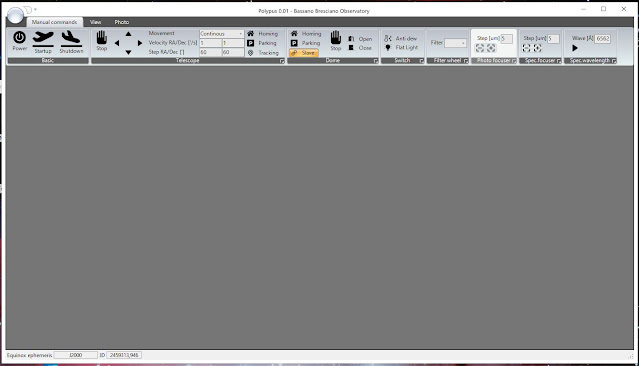Hello,
now the controller and driver part of the project is finished so the third step need to be started. It is the step requiring the most effort. The develop of a new version for the software managing the entire observatory. Since 2010 in the Bassano Bresciano observatory we use Polypus a software we build for this purpose with CBuilder compiler in C++. Now we need a new version of this software able to manage more devices. At this point Ascom Drivers are mandatory in order to don’t have Polypus strictly link the current device we use now. Polypus 2 will be developed by VisualStudio in C#.
Polypus 2 should support window docking so it should be possible dock windows in the program where you prefer. This is not a native Visual studio feature. After an investigation and test we select this open source library
https://www.codeproject.com/Articles/42800/Visual-Studio-IDE-like-Dock-Container-Second-Versi
https://www.codeproject.com/Articles/25907/A-Professional-Ribbon-You-Will-Use-Now-with-orb
Program should use dark color so to be useful the observatory light and to be style updated. Icons should be monochromatic black.
Here is the prototype of the main window
when a first version where the manual movement are working I'll publish it





















